Bb6.7
All successful human action is preceded by right
knowledge. This statement at the beginning of the work
by Dharmakīrti (Th.
Stcherbatsky, Buddhist Logic.) has stuck in my
mind all these years. At present my interpretation is that the right
knowledge in question might be a reference to that global
(bubble belief) system which was shaped (born) at the beginning of our
current world.
For basically right knowledge was
necessary in order to predict the outcome of
agricultural efforts. Facts mattered.
... and then, with stunning
abruptness, at a crucial date that can be almost
precisely fixed at 3200 BC (in the period of the
archaeological stratum known as Uruk B), there appears
in this little Sumerian mud garden - as though the
flowers of its tiny cities were suddenly bursting into
bloom - the whole cultural syndrome that has since
constituted the germinal unit of all the high
civilization of the world. And
we cannot attribute this event to any achievement of the
mentality of simple peasants. Nor was it the mechanical
consequence of a simple piling up of material artifacts,
economically determined. It was actually and clearly the
highly conscious creation (this much can be asserted
with complete assurance) of the mind and science of a
new order of humanity, which had never before appeared
in the history of mankind; namely, the professional,
full-time, initiated, strictly regimented temple priest.
The new inspiration of civilized life
was based, first, on the discovery, through long and
meticulous, carefully checked and rechecked
observations, that there were, besides the sun and moon,
five other visible or barely visible heavenly spheres
(to wit, Mercury, Venus, Mars, Jupiter, and Saturn)
which moved in established courses, according to
established laws, along the ways followed by the sun and
moon, among the fixed stars; and then, second, on the
almost insane, playful, yet potentially terrible notion
that the laws governing the movements of the seven
heavenly spheres should in some mystical way be the same
as those governing the life and thought of men on earth.
The whole city, not simply the temple
area, was now conceived as an imitation on earth of the
cosmic order, a sociological 'middle cosmos', or
mesocosm, established by priestcraft between the
macrocosm of the universe and the microcosm of the
individual, making visible the one essential form of all.
The king was the center, as a human
representative of the power made celestially manifest
either in the sun or the moon, according to the focus of
the local cult; the walled city was organized
architecturally in the design of a quartered circle
(like the circles designed on the ceramic ware of the
period just preceeding), centered around the pivotal
sanctum of the palace or ziggurat (as the ceramic
designs around the cross, rosette, or swastika); and
there was a mathematically structured calendar to
regulate the seasons of the city's life according to the
passages of the sun and moon among the stars - as well
as a highly developed system of liturgical arts,
including music, the art rendering audible to human ears
the world-ordering harmony of the celestial spheres.
It was at this moment in human
destiny that the art of writing first appeared in the
world and that scriptorially documented history
therefore begins. Also, the wheel appeared. And we have
evidence of the development of the two numerical systems
still normally employed throughout the civilized world,
the decimal and the sexigesimal; the former was used
mostly for business accounts in the offices of the
temple compounds, where the grain was stored that had
been collected as taxes, and the latter for the
ritualistic measuring of space and time as well. Three
hundred and sixty degrees, then as now, represented the
circumference of a circle - the cycle of the horizon -
while three hundred and sixty days, plus five, marked
the measurement of the circle of the year, the cycle of
time. The five intercalated days that bring the total to
three hundred and sixty-five were taken to represent a
sacred opening through which spiritual energy flowed
into the round of the temporal universe from the pleroma
of eternity, and they were designated, consequently,
days of holy feast and festival. Comparably, the
ziggurat, the pivotal point in the center of the sacred
circle of space, where the earthly and heavenly powers
joined, was also characterized by the number five; for
the four sides of the tower, oriented to the points of
the compass, came together at the summit, the fifth
point, and it was there that the energy of heaven met
the earth.
The early Sumerian temple tower with
the hieratically organized little city surrounding it,
where everyone played his role according to the rules of
a celestially inspired divine game, supplied the model
of paradise that we find, centuries later, in the
Hindu-Buddhist imagery of the world mountain, Sumeru,
whose jeweled slopes, facing the four directions,
peopled on the west by sacred serpents, on the south by
gnomes, on the north by earth giants, and on the east by
divine musicians, rose from the mid-point of the earth
as the vertical axis of the egg-shaped universe, and
bore on its quadrangular summit the palatial mansions of
the deathless gods, whose towered city was known as
Amaravati, 'The Town Immortal'. But it was the model
also of the Greek Olympus, the Aztec temples of the sun,
and Dante's holy mountain of Purgatory, bearing on its
summit the Earthly Paradise.
For the form and concept of the City
of God conceived as a 'mesochosm' (an earthly imitation
of the celestial order of the macrocosm) which emerged
on the threshold of history circa 3200 BC, at precisely
that geographical point where the rivers of Tigris and
Euphrates reach the Persian Gulf, was disseminated
eastward and westward along the ways already blazed by
the earlier neolithic. The wonderful life-organizing
assemblage of ideas and principles - including those of
kingship, writing, mathematics, and calendrical
astronomy - reached the Nile, circa 2800 BC; it spread
to Crete on the one hand, and on the other, to the
valley of the Indus, circa 2600 BC; to Shang China,
circa 1600 BC; and, according to at least one high
authority, Dr Robert Heine-Geldern, from China across
the Pacific, during the prosperous seafaring period of
the late Chou Dynasty, between the seventh and fourth
centuries BC, to Peru and Middle America ...
.jpg)
The 6th glyph line on side b of the B tablet has
evidently 6
glyphs at the beginning in order to finish off the old year
at Terminalia, so it seems. And the important feature was
presumably not
this date as such but rather a structure reflecting the 6
stars (Tau-ono) of the Pleiades, a signature of
the beginning.
... They all sat down and rested [on
the plain of Oromanga], when suddenly they saw
that a turtle had reached the shore and had crawled up
on the beach. He [Ira] looked at it and said,
'Hey, you! The turtle has come on land!' He said, 'Let's
go! Let's go back to the shore.' They all went to pick
up the turtle. Ira was the first one to try to
lift the turtle - but she didn't move. Then Raparenga
said, 'You do not have the necessary ability. Get out of
my way so that I can have a try!' Raparenga
stepped up and tried to lift the turtle - but
Raparenga could not move her. Now you spoke,
Kuukuu: 'You don't have the necessary ability, but I
shall move this turtle. Get out of my way!' Kuukuu
stepped up, picked up the turtle, using all his
strength. After he had lifted the turtle a little bit,
he pushed her up farther. No sooner had he pushed her up
and lifted her completely off the ground when she struck
Kuukuu with one fin. She struck downward and
broke Kuukuu's spine.The turtle got up, went back
into the (sea) water, and swam away. All the kinsmen
spoke to you (i.e. Kuukuu): 'Even you did not
prevail against the turtle!' They put the injured
Kuukuu on a stretcher and carried him inland. They
prepared a soft bed for him in the cave and let him rest
there. They stayed there, rested, and lamented the
severely injured Kuukuu. Kuukuu said,
'Promise me, my friends, that you will not abandon me!'
They all replied, 'We could never abandon you!' They
stayed there twenty-seven [27] days in Oromanga.
Everytime Kuukuu asked, 'Where are you, friends?'
they immediately replied in one voice, 'Here we are!'
They all sat down and thought. They had an idea and
Ira spoke, 'Hey, you! Bring the round stones (from
the shore) and pile them into six heaps of stones!' One
of the youths said to Ira, 'Why do we want heaps
of stone?' Ira replied, 'So that we can all ask
the stones to do something.' They took (the material)
for the stone heaps (pipi horeko) and piled up
six heaps of stone at the outer edge of the cave.

Then
they all said to the stone heaps, 'Whenever he calls,
whenever he calls for us, let your voices rush (to him)
instead of the six (of us) (i.e., the six stone heaps
are supposed to be substitutes for the youths). They all
drew back to profit (from the deception) (? ki honui)
and listened. A short while later, Kuukuu called.
As soon as he had asked, 'Where are you?' the voices of
the stone heaps replied, 'Here we are!' All (the youths)
said, 'Hey, you! That was well done!' ...
Similarly the C tablet exhibits 6 preceding glyphs both on
its
side a and on
its
side b.
| 5 |
 |
386 |
5 |
 |
342 |
|
6 |
6 |
The Explorers stayed 27 days outside the cave of
poor Kuukuu and in the B text we can count 27
days from August 4 (216) at the Full Moon to the
last day of August at glyph number 216.
→ 6 + 21 = 27.
 |
 |
 |
 |
 |
 |
 |
 |
|
Bb5-26 |
Bb5-27 |
Bb5-28 |
Bb5-29 (192) |
Bb5-30 |
Bb5-31 |
Bb5-32 (616) |
Bb5-33 |
|
mai tae oho te
tagata - ki to maro - e tagata ui ki to
maitaki |
ihe tamaiti |
kua hua koia |
e kua oho te rima -
ki te vai - ko te vai kua oho ki te mea
maú |
ko te tagata
kua oho - ki te huaga o te poporo |
e ariki ra
|
|
Ui.
To ask. Vanaga.
Û'i.
To look, to look at (ki);
e-û'i koe! look out! Vanaga.
Ui.
1. Question, to interrogate, to ask (ue).
Uiui,
to ask questions. 2. To spy, to inspect,
to look at, to perceive;
tagata ui,
visitor. Churchill.
Tama.
1. Shoot (of plant), tama
miro, tree shoot; tama tôa,
shoot of sugarcane. 2. Poles, sticks,
rods of a frame. 3. Sun rays. 4. Group
of people travelling in formation. 5. To
listen attentively (with ear, tariga,
as subject, e.g. he tama te tariga);
e-tama rivariva tokorua tariga ki
taaku kî, listen carefully to my
words. Tamahahine, female.
Tamahine (= tamahahine),
female, when speaking of chickens:
moa tamahine, hen. Tamâroa,
male. Vanaga. 1. Child. P Pau.: tama
riki, child. Mgv.: tama, son,
daughter, applied at any age. Mq.:
tama, son, child, young of animals.
Ta.: tama, child. Tamaahine
(tama 1 - ahine),
daughter, female. Tamaiti, child
P Mq.: temeiti, temeii,
young person. Ta.: tamaiti,
child. Tamaroa, boy, male. P
Mgv.: tamaroa, boy, man, male.
Mq.: tamaóa, boy. Ta.: tamaroa,
id. 2. To align. Churchill. In the
Polynesian this [tama na, father
in the Efaté language] is distinguished
from táma child by the accent
tamā or
by the addition of a final syllable
which automatically secures the same
incidence of the accent, tamái,
tamana
... Churchill 2.
Iti. Little,
small, medium; iti atu, less;
iti no, small quantity, rare; no
iti, superficial. Itia,
shrunken. Itiiti, scanty, slim;
hare itiiti no, cabin; itiiti
noa, mediocre, mediocricity.
Hakaiti, to make small, to lessen,
to weaken, to impoverish, to thin out,
to reduced, to diminish, to retrench, to
curtail, to subdue, to mitigate, to
abate. Hakaitiiti, to squat, to
croach. P Mgv.: iti, small. Mq.:
iti, id. Ta.: iti, id.
Churchill.
Hua. 1. Testicle.
2. Figuratively: son, hua tahi,
only son; fruits of the earth; to grow
well (of fruits). 3. To cause a fight, a
quarrel. Hua-ai, generation, as
lineage of direct descendents;
contemporaries. Huahua, coccyx of
bird, 'parson's nose': huahua
moa, huahua uha. Huataru,
a creeper (Chenopodium
ambiguum). Vanaga. 1. The same;
ki hua, again, to continue, to
strain, to struggle, to move, to repeat,
over and above. Mq.: hua, the
same, to return, to recommence. 2. To
bloom, to sprout; flower, fruit (huaa);
huaa tae oko, huaa vahio,
young fruit; hua atahi, only son;
huahaga, fruit; mei te huahaga
o tokoe kopu, the fruit of thy body;
tikea huahaga, deceptive
appearance. P Pau.: ua, to be
born; huahaga, lineage. Mgv.:
hua, to produce (said of trees,
grain, etc.), blooming time of flowers,
abundance of fruit. Mq.: hua, to
produce, to bear fruit. Ta.: ua,
to sprout. Huahua. 1. Tailless
fowl. 2. Vein, tendon, line. 3. Mgv.:
huahua, pimples covering the face.
Ta.: huahua, id. Mq.: hua,
tubercules. Sa.: fuafua, abscess
on hand or feet. Ma.: huahua,
small pimples. Pau.: Hua-gakau,
rupture. Ta.: áau, entrails. Sa.:
ga'au, id. Ma.: ngakau,
id. Churchill. 1. Fruit. 2. Egg. 3. Tā
hua = 'genealogical writing' or
'same writing'. Fischer.
Ma'u. 1. To
carry, to transport; he-ma'u-mai,
to bring; he-ma'u-atu, to remove,
ma'u tako'a, to take away with
oneself; te tagata hau-ha'a i raro,
ina ekó ma'u-tako'a i te hauha'a o te
kaiga nei ana mate; bienes
terrenales cuando muere
→ a
rich man in this world world cannot take
his earthly belongings with him when he
dies. 2. To fasten, to hold something
fast, to be firm; ku ma'u-á te veo,
the nail holds fast. 3. To contain, to
hold back; kai ma'u te tagi i roto,
he could not hold his tears back.
Vanaga. |
|
Febr
3 |
4 (4 * 100) |
5 |
6 |
7 |
8 |
9
(40) |
10 |
|
...
On February 9 the Chorti Ah K'in,
'diviners', begin the agricultural year.
Both the 260-day cycle and the solar
year are used in setting dates for
religious and agricultural ceremonies,
especially when those rituals fall at
the same time in both calendars. The
ceremony begins when the diviners go to
a sacred spring where they choose five
stones with the proper shape and color.
These stones will mark the five
positions of the sacred cosmogram
created by the ritual. When the stones
are brought back to the ceremonial
house, two diviners start the ritual by
placing the stones on a table in a
careful pattern that reproduces the
schematic of the universe. At the same
time, helpers under the table replace
last year's diagram with the new one.
They believe that by placing the cosmic
diagram under the base of God at the
center of the world they demonstrate
that God dominates the universe. The
priests place the stones in a very
particular order. First the stone that
corresponds to the sun in the eastern,
sunrise position of summer solstice is
set down; then the stone corresponding
to the western, sunset position of the
same solstice. This is followed by
stones representing the western, sunset
position of the winter solstice, then
its eastern, sunrise position. Together
these four stones form a square. They
sit at the four corners of the square
just as we saw in the Creation story
from the Classic period and in the Popol
Vuh. Finally, the center stone is placed
to form the ancient five-point sign
modern researchers called the quincunx
...
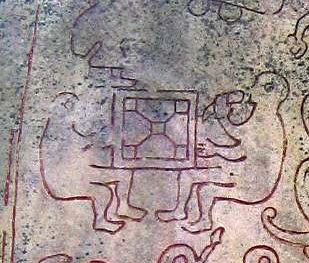 |
|
DEC 1 |
2 (4
* 84) |
3 |
4 |
5 |
6 |
7 |
8 |
|
21h (319.6)
ARMUS = η Capricorni
(319.0),
DORSUM =
θ
Capricorni
(319.3),
TSOO = 24 Capricorni
(319.7) |
DRAMASA (the South Pole star) =
σ
Oct.,
χ
Capricorni (320.0),
ν
Aquarii (320.3),
γ
Equulei (320.6),
ο
Pavonis (320.8) |
α Oct. (321.5),
δ
Equulei (321.7),
φ
Capricorni (321.8) |
KITALPHA (Part of a Horse) =
α
Equulei
(322.0),
ALDERAMIN (The Right Arm) = α Cephei
(322.9) |
DAI =
ι
Capricorni
(323.5),
β
Equulei (323.8) |
γ
Pavonis (324.1),
YAN =
ζ
Capricorni
(324.6) |
Al Sa'd al
Su'ud-22 (Luckiest of the Lucky)
/
Emptiness-11 (Rat)
TSIN = 36 Capricorni
(325.2),
ALPHIRK (The Flock) =
β
Cephei
(325.7),
SADALSUD =
β
Aquarii,
ξ
Gruis (325.9) |
No star listed (326) |
|
ν Cancri (136.0),
TALITHA AUSTRALIS = κ Ursae Majoris
(136.1), ω Hydrae (136.8) |
9h (137.0)
σ¹ Ursa Majoris (137.0), κ Cancri
(137.3),
τ Cancri (137.4),
ALSUHAIL (al Wazn, of the Weight) = λ
Velorum
(137.5), σ² Ursa Majoris (137.6), τ Ursa
Majoris (137.7), ξ Cancri (137.8)
*96.0 = *137.4 - *41.4 |
κ Pyxidis (138.0), ε Pyxidis (138.5) |
π
Cancri (139.2),
MIAPLACIDUS =
β
Carinae
(139.3),
TUREIS (Little Shield) = ι Carinae
(139.8) |
No star listed (140) |
θ
Pyxidis (141.5),
MARKAB VELORUM =
κ
Velorum
(141.5),
AL MINHAR AL ASAD (The Nose of the Lion)
=
κ
Leonis
(141.6),
λ
Pyxidis (141.9) |
Star-25 (Horse)
/
ANA-HEU-HEU-PO-5
(Pillar where debates were held)
ALPHARD (The Horse) =
α
Hydrae
(142.3),
ω
Leonis (142.6),
τ¹
Hydrae (142.7) |
Al Tarf-7 (The
End)
ψ
Velorum (143.3),
ALTERF =
λ
Leonis,
τ²
Hydrae (143.4),
ξ
Leonis (143.5)
*102.0 = *143.4 - *41.4 |
|
Aug 4 (216) |
5 |
6 |
7 |
8 |
9 |
10
(222) |
11 |
|
→ St
John |
"June 25 |
26
(177) |
27 |
28 |
29
(180) |
30 |
"July
1 |
 |
 |
 |
 |
 |
 |
|
Bb6-1 (25 * 25) |
Bb6-2 |
Bb6-3 (619 + 8) |
Bb6-4 (2 * 314) |
Bb6-5 |
Bb6-6 → 360 |
|
Ki te henua |
ko te henua |
kua tu ko te hei |
tona maitaki |
ko te tagata hau |
ki to maro - koia kua
huki |
|
Febr 18 (41.4) |
19 |
20 |
21 |
22 (53) |
Terminalia (419) |
|
"Jan 8 |
9 |
10 |
11 |
12 |
13 |
|
DEC 16 (350) |
17 |
18 |
19 |
20 |
SOLSTICE |
|
Rooftop-12
(Swallow)
22h (334.8)
KAE UH (Roof) =
ο
Aquarii
(334.0),
AL KURHAH (White Spot) =
ξ
Cephei (334.4),
SADALMELIK (Lucky King) =
α
Aquarii,
AL DHANAB (The Tail) =
λ
Gruis
(334.6),
ι
Aquarii,
ν
Pegasi (334.7)
*293.0 = *334.4 - *41.4 |
ι
Pegasi (335.0),
ALNAIR (The Bright One) =
α
Gruis
(335.1),
μ
Piscis Austrini,
υ
Piscis Austrini (335.3),
WOO (Pestle) =
π
Pegasi
(335.7),
BAHAM =
θ
Pegasi (Good Luck of the Two Beasts),
τ
Piscis Austrini (335.8) |
ζ
Cephei (336.2),
λ
Cephei (336.3), -/270 Lac.
(336.7), λ Piscis Austrini (336.8) |
μ
Gruis (337.0),
ε
Cephei (337.2), 1/325 Lac. (337.3),
ANCHA (Hip) =
θ
Aquarii
(337.4),
ψ
Oct.
(337.5), α Tucanae (337.9)
*296.0 = *337.4 - *41.4 |
Al Sa'ad al
Ahbiyah-23 (Lucky Star of Hidden
Things) /
Shatabisha-25
(Comprising a Hundred Physicians)
ε
Oct. (338.1),
ρ
Aquarii
(338.2), 2/365
Lac. (338.5),
SADACHBIA =
γ
Aquarii
(338.6),
π
Gruis (338.9) |
β/172
Lac. (339.2),
4/1100 Lac. (339.4),
π
Aquarii
(339.5)
*298.0 = *339.4 - *41.4
CASTOR (α Gemini) |
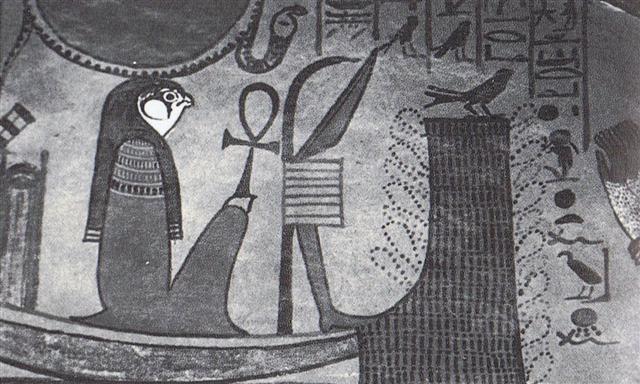
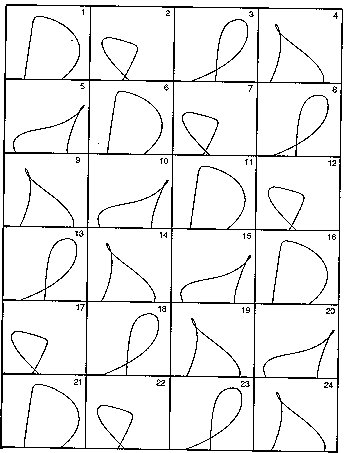
|
1900-07-08 |
1902-02-14 |
1903-09-17 |
1905-04-27 |
1906-11-30 |
|
189 = 148 + 41 |
45
→
360 / 8 |
260 = 188 + 72 |
9 * 13 ↔ 3 * 91 |
334 = 260 + 74 |
 |
 |
 |
 |
 |
|
Cancer |
Aquarius |
Virgo |
Taurus |
Sagittarius |
|
"May 28 (148) |
|
13
Ahaw 3 Kumk'u |
|
"Oct 25 (293) |
|
146 = 366 - 220 = 2 * 73
→ Sept 30 (273 = 3 * 91
= 9 * 13 + 12 * 13)
→
334 - 61 |
|
... Ira left [for Hiva,
for Maori, i ōho ai a
Ira.ki hiva.ki maori]
on the twenty-fifth day
of the month of October
('Tangaroa Uri') ... [E:86] |
|
|
υ² Hydrae (151.8) |
Al Jabhah-8
(Forehead) /
Maghā-10
(Bountiful) /
Sharru-14
(King)
10h (152.2)
AL JABHAH =
η
Leonis (152.4),
REGULUS (Little KIng) =
α
Leonis
(152.7)
*111.0 = *152.4 - *41.4 |
λ Hydrae (153.2) |
ADHAFERA
= ζ Leonis,
TANIA BOREALIS (Northern Gazelle) =
λ Ursae Majoris, SIMIRAM = ω Carinae
(154.7) |
ALGIEBA (The
Mane) =
γ
Leonis,
q Carinae (155.5) |
TANIA AUSTRALIS (Southern Gazelle) =
μ
Ursae Majoris
(156.0),
GHOST OF JUPITER = NGC3242 Hydrae
(156.8) |
.jpg) |
|
Aug 19 (231) |
20 |
21 |
22 |
23 |
24 (8 * 29½) |
|
"July 9 (190) |
10 |
11 |
12 |
13 |
14 (195) |
|
JUNE 16 |
17 |
18 |
19 |
20 |
SOLSTICE |
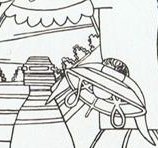
 |
 |
 |
 |
 |
 |
 |
|
Bb6-7 (631) |
Bb6-8 |
Bb6-9 |
Bb6-10 |
Bb6-11 |
Bb6-12 |
Bb6-13 (216) |
|
Febr 24 (420) |
25 |
26 |
27 |
28 (59) |
|
|
|
"Jan 14 |
15 |
16 |
17 |
18 |
19 (384 = 8 *
48) |
20 |
|
DEC 22 (356) |
23 |
24 |
25 |
26 (360) |
27 (19 * 19) |
28 |
|
... That the
Sun-gods Dionysus, Apollo and
Mithras were all also reputedly born
at the Winter solstice is well
known, and the Christian Church
first fixed the Nativity feast of
Jesus Christ at the same season, in
the year A.D. 273 [→ 3 * 91]. St.
Chrysostom, a century later, said
that the intention was that 'while
the heathen were busied with their
profane rites the Christians might
perform their holy ones without
disturbance', but justified the date
as suitable for one who was 'the Sun
of Righteousness'. Another
confirmation of the date is that
Zeus was the son of Cronos, whom we
have securely identified with Fearn,
or Bran, the god of the F month in
the Beth-Luis-Nion. If one reckons
back 280 days from the Winter
Solstice, that is to say ten months
of the Beth-Luis-Nion calendar, the
normal period of human gestation,
one comes to the first day of
Fearn. (Similarly, reckoning 280
days forward from the Winter
Solstice, one comes to the first day
of the G month, Gore, sacred
to Dionysus; Dionysus the vine and
ivy-god, as opposed to the Sun-god,
was son to Zeus.) Cuchulain was born
as the result of his mother's
swallowing a may-fly; but in Ireland
may-flies often appear in late
March, so his birthday was probably
the same ... |
|
δ Tucanae (340.1), ρ Cephei (340.2), ν Gruis
(340.3),
ζ Aquarii, δ Gruis (340.4), 5/1100 Lac. (340.7), σ Aquarii, 6/650 Lac. (340.9)
*299.0 = *340.4 - *41.4
PROCYON (α Canis Minoris) |
υ
Oct. (341.0),
α/91
Lac. (341.1),
HOMAN (Hero) =
ζ
Pegasi,
β
Piscis Austrini (341.2),
ν
Tucanae (341.5),
υ
Aquarii
(341.9) |
η
Aquarii
(342.1),
σ
Gruis (342.4),
SITULA (Water-jar) =
κ
Aquarii
(342.7)
*301.0 = *342.4 - *41.4 |
ε Piscis Austrini (343.5), ο Pegasi, β Gruis
(343.8 |
ρ Gruis (344.0),
MATAR (Rain) = η Pegasi
(344.2), η Gruis (344.6), β Oct. (344.7) |
λ Pegasi (345.0), ξ Pegasi (345.1), ε Gruis
(345.3), τ Aquarii (345.7), ξ Oct. (345.8), μ
Pegasi (345.9) |
ι Cephei (346.0), λ Aquarii, γ Piscis Austrini,
σ Pegasi (346.5) |
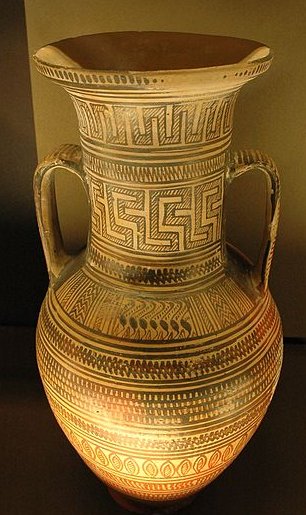
 |
348 = 12
* 29 |
 |
 |
 |
|
Ba7-35 (286) |
Bb6-11 (635) |
Bb6-12 (286 +
350) |
Ca14-23 (286 + 100) |
|
March 16
(*360) |
Febr 28
(59) |
*345 |
April 10
(100, *20) |
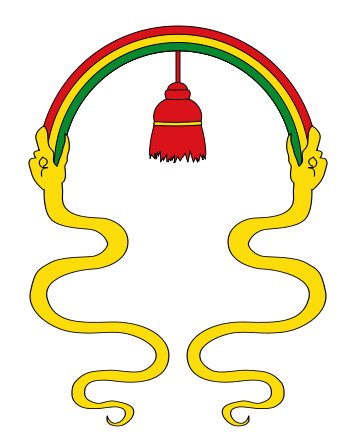
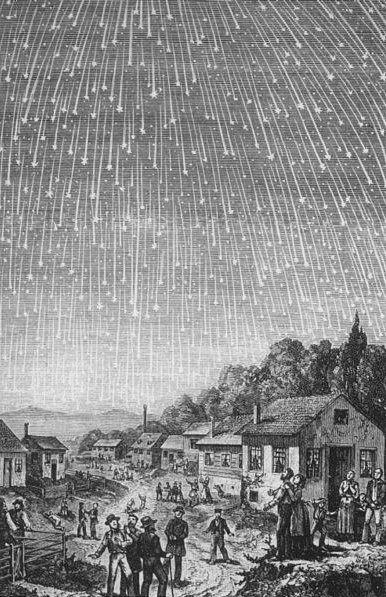 |
|
Extended Net-26b (Ox)
μ
Hydrae
(157.1) |
Maru-sha-arkat-Sharru-15 (4th Son behind the
King)
SHIR (Possessing Luminous Rays) =
ρ
Leonis
(158.9) |
p Carinae (159.3) |
φ Hydrae (160.3) |
No star listed (161 →
φ) |
VATHORZ POSTERIOR = θ Carinae
(162.1),
PEREGRINI = μ Velorum,
η Carinae
(162.6) |
ν Hydrae (163.1) |
|
Aug 25 |
26 |
27 |
28 (240) |
29 |
30 |
31 |
|
"July 15
(196) |
16 |
17 |
18 (199) |
19 |
20 |
21 |
|
JUNE 22 |
23 |
ST JOHN |
25 |
26 (6 * 29½) |
27 |
28 |

... The Pythagoreans make Phaeton fall into
Eridanus, burning part of its water, and glowing still
at the time when the Argonauts passed by. Ovid stated
that since the fall the Nile hides its sources. Rigveda
9.73.3 says that the Great Varuna has hidden the ocean.
The Mahabharata tells in its own style why the 'heavenly
Ganga' had to be brought down. At the end of the Golden
Age (Krita Yuga) a class of Asura who had
fought against the 'gods' hid themselves in the ocean
where the gods could not reach them, and planned to
overthrow the government. So the gods implored
Agastya (Canopus, alpha Carinae =
Eridu) for help. The great Rishi
did as he was bidden, drank up the water of the ocean,
and thus laid bare the enemies, who were then slain by
the gods. But now, there was no ocean anymore! Implored
by the gods to fill the sea again, the Holy One replied:
'That water in sooth hath been digested by me. Some
other expedient, therefore, must be thought of by you,
if ye desire to make endeavour to fill the ocean
... |
The navel (pito) was the proper place
for a birth.
|
 |
 |
|
Bb6-14 |
Bb6-15 |
|
ki te henua -
i ruga o te tagata |
kua tu erua
toga |
|
DEC 29 |
30 (364) |
|
FOM-AL-HAUT (Mouth of the Fish) = α Piscis
Austrini
(347.8) |
FUM AL SAMAKAH (Mouth of the Fish)= β Piscium
(348.3), |
ALTAIR
|
ALKES = α Crateris
(165.6) |
|
JUNE 29 |
30 (175 + 6 = 181) |
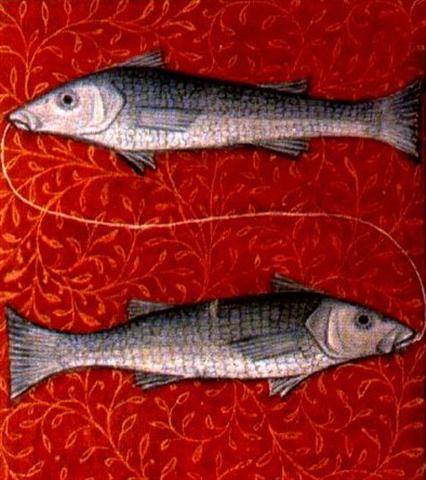
|
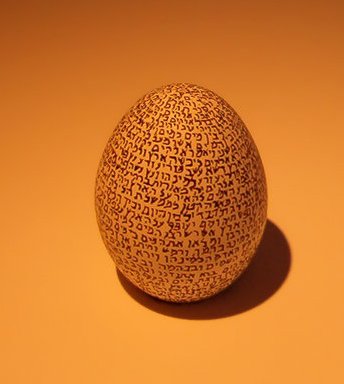
.jpg)




























